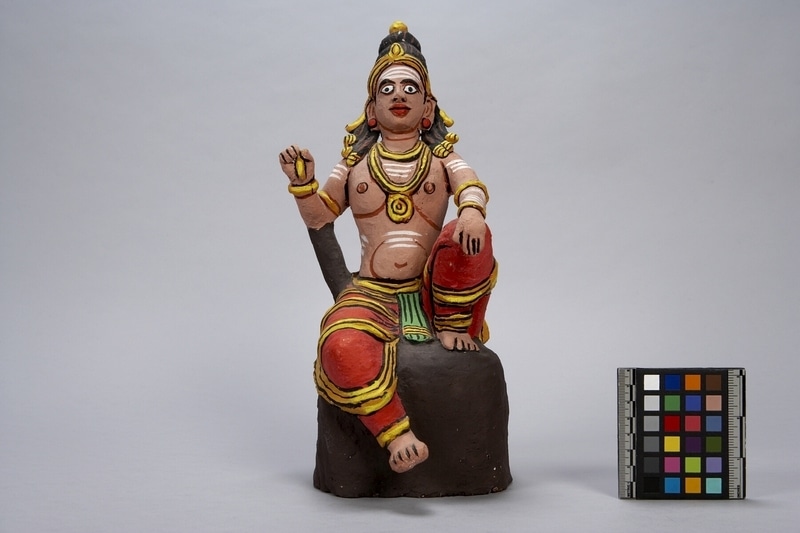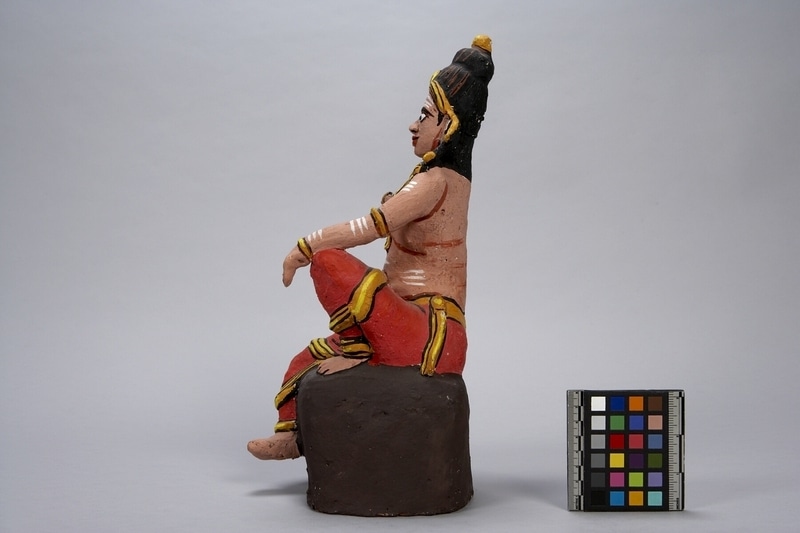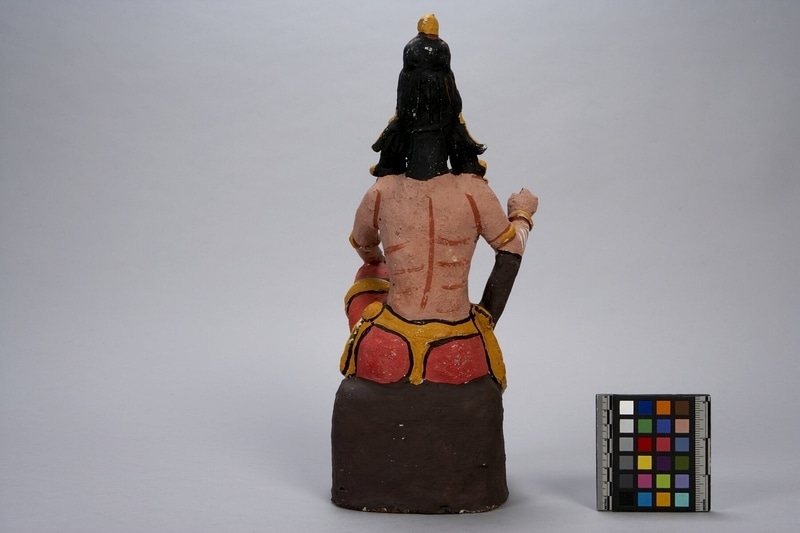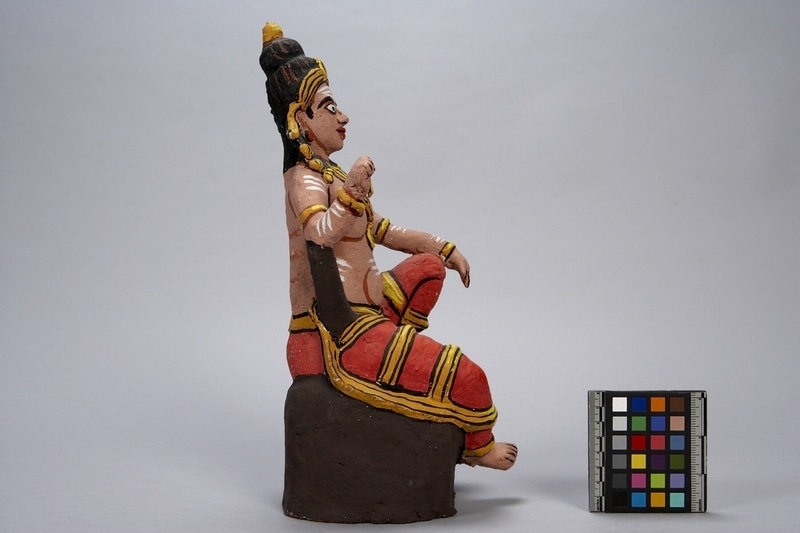Aiyanar Figure Item Number: Eg11 from the MOA: University of British Columbia




Description
Modeled clay figure of a seated male on a hollow cubical base. One knee is pulled up and the other hangs loosely. The right arm is upraised clutching a handle from which the major part has broken off. This arm is supported by a strut. The other arm rests on the knee. The figure wears elaborate jewelry, a high headdress, and is bare to the waist with a flowing lower body garment. White stripes are painted across forehead, arms, chest and stomach.
History Of Use
Figures of the village gods are made, usually by specific arrangement, by velar potters. These figures are installed during a festival in a local village temple, in conjunction with or rather than permanent stone images. The figures are worshipped periodically and replaced with new figures as often as once a year.
Cultural Context
ritual; religious offering
Iconographic Meaning
Aiyanar: principal god of village people in south India. His dress and ornament reflect his status as an ascetic and heroic king in the traditional fashion. He patrols the village boundary at night and intercedes in numerous important problems.
Item History
- Made by K. Muthusamy Velar (Maker) in Madurai, Tamil Nadu, India during February 1975
- Owned by Stephen Inglis before November 1975
- Received from Stephen Inglis (Seller) and Unknown (Funding source) during November 1975
What
Who
- Culture
- South India
- Creator
- K. Muthusamy Velar (Maker)
- Previous Owner
- Stephen Inglis
- Received from
- Stephen Inglis (Seller) and Unknown (Funding source)
Where
- Holding Institution
- MOA: University of British Columbia
- Made in
- Madurai, Tamil Nadu, India
When
- Creation Date
- during February 1975
- Ownership Date
- before November 1975
- Acquisition Date
- during November 1975
Other
- Item Classes
- ceramics; carvings & sculpture
- Condition
- good
- Accession Number
- 0400/0002